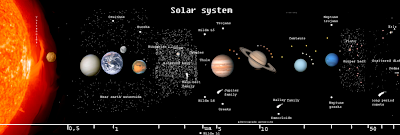Our future might not be written in the celestial bodies
But our past certainly is
Every atom in our body, in air, water and earth,
Was forged in the hearts of old stars, long gone
And your body might only be made of those atoms
But it’s still so beautiful in its natural complexity
We might not be a special creation
But that makes everything more poetic
All life united by the same biochemistry
Painstakingly slowly changing to survive better
Your mind might only be the function of your brain
Just like all functions of our bodies arise from matter
But how does that change the richness of your emotions?
How powerful your love or hate can be for others?
And if art is not supernaturally inspired
Does that somehow negate how it touches other humans?
And while morality may not be coming from above
That only makes it so much greater
How wonderful it is, knowing it evolved,
Simply because cooperation makes life for everyone better
How does all that lessen our achievements?
In becoming more loving and more informed
In abandoning cruelty little by little
And embracing knowledge step by step
So what if we don’t have immortal souls?
Does it make this one life less wondrous or more?
The Earth might not be the center of the Universe
But it’s still as important to us as if it were
And the stars may not be telling me who you are
But they still look beautiful mirrored in your eyes.


























.png)



